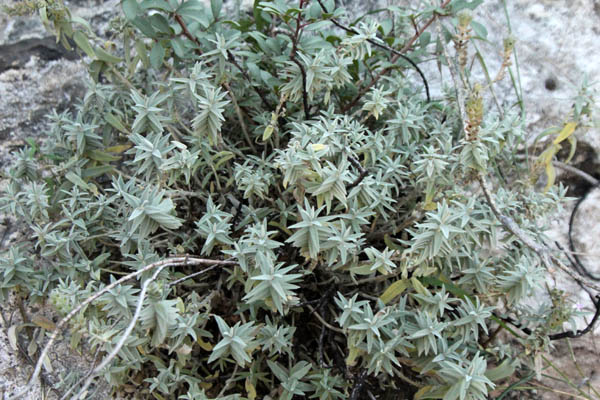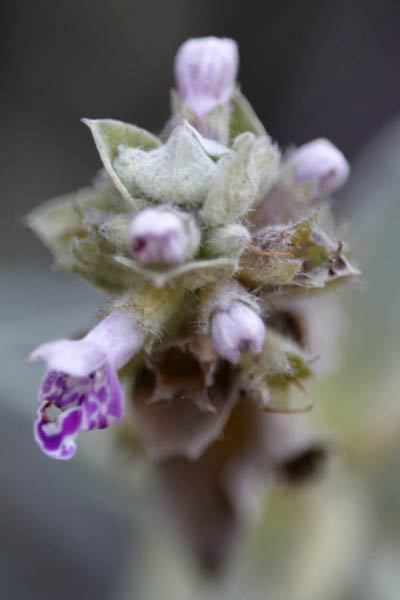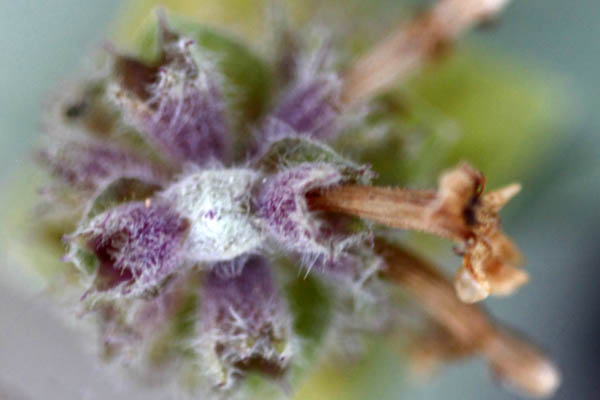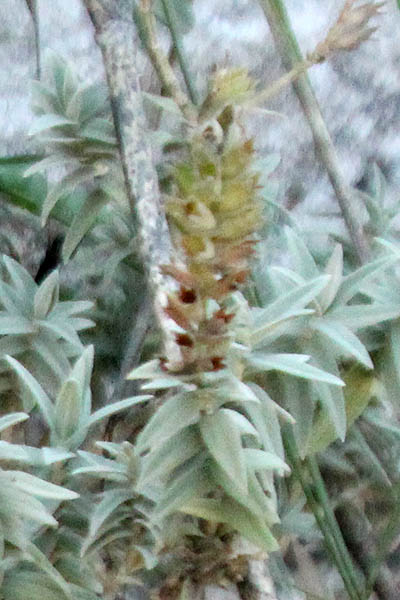Hebrew: אשבל ארץ-ישראלי, Arabic: البطنج الفلسطيني
| Scientific name: | Stachys palaestina L. | |
| Common name: | Palestine woundwort | |
| Hebrew name: | אשבל ארץ-ישראלי | |
| Arabic name: | البطنج الفلسطيني | |
| Family: | Labiatae / Lamiaceae, שפתניים |

Location: Mount Carmel |
| Life form: | Chamaephyte | |
| Stems: | Flowers clustered in the axils of the leaves on the upper part of the stem | |
| Leaves: | Opposite, triangular leaves, serrate margins | |
| Flowers: | Hermaphrodite, a cymose inflorescence in terminal spike; white, pink | |
| Fruits / pods: | Homogeneous seeds-fruits; nutlets | |
| Flowering Period: | April, May, June, July, August, September | |
| Habitat: | Hard rock outcrops | |
| Distribution: | Mediterranean Woodlands and Shrublands, Semi-steppe shrublands, Montane vegetation of Mt. Hermon | |
| Chorotype: | Mediterranean | |
| Summer shedding: | Perennating |

Location: Mount Carmel Derivation of the botanical name: Stachys, Greek, a spike, relating to a spike. palaestina, of or from Palestine. The Hebrew name: אשבל, eshbol, a blend of אשכול, eshkol (=cluster), and שבולת, shibolet (=ear of corn).

Location: Mount Carmel 
Location: Mount Carmel |